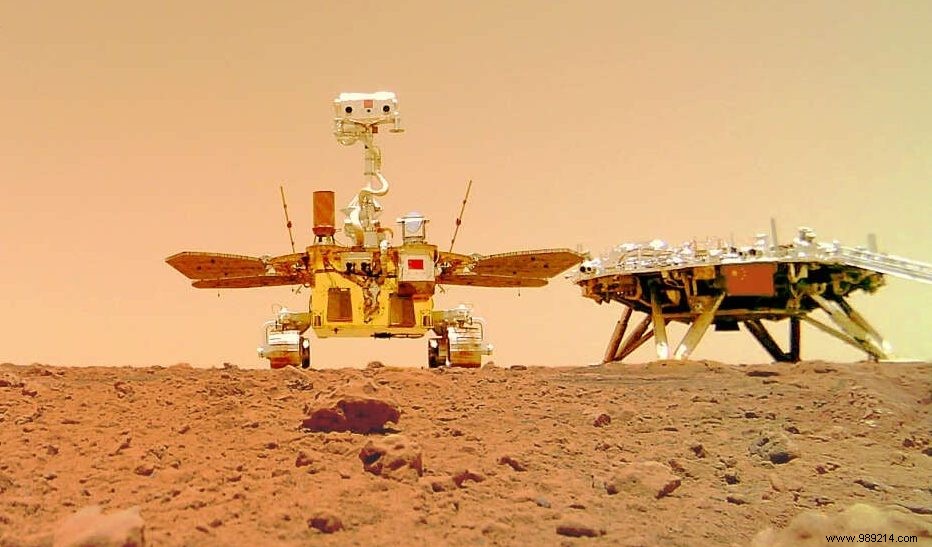Compared to NASA's Mars 2020 mission, the first scientific results of the Chinese Tianwen-1 mission seem to be overdue. Why is China taking so long to publish the Martian findings of its Zhurong rover?
As part of the Tianwen-1 mission to the red planet, the Chinese rover Zhurong landed on May 14, 2021 with a successful deployment less than a week later . With this mission, China became the second country to successfully land on Mars and establish communications from the surface of this planet. The CNSA has also already completed its primary mission on Mars and has begun the extended phase of its activities . However, since the landing, the Chinese National Space Agency (CNSA) has not communicated much about the mission, which is rather curious. In comparison, NASA regularly releases press releases about its Perseverance rover.
Australian reporter Smriti Mallapaty published an article in the journal Nature on November 30, 2021 in which he explains why Zhurong's first scientific results are taking so long to reach the public. As was the case with other Mars missions, the Zhurong rover experienced a kind of hibernation period in September, the solar conjunction usually prevents the agencies from communicating correctly with their machine. However, the rover got back on the road in October and traveled another two hundred meters. However, the September break allowed the CNSA to begin analyzing the first data .

According to the post, the first results have not yet arrived for several reasons. The volume of data is significant. They must therefore be treated and cleaned. No less than 200 GB of data obtained between February and June 2021 must therefore go through this stage in order to guarantee their reliability and eliminate the noise of the instruments. Among the files, we find images from the rover's navigation camera, climatic data (wind speed, temperature or pressure), and elements on the chemical composition of the soil, rocks and sand dunes. Let's also quote potential information on the basement of Mars .
In addition, the delay is also the consequence of a lack of experience CNSA compared to NASA. In addition, the way of working of the two agencies differs. Indeed, the Chinese Academy of Sciences (NAOC) analyzes all CNSA data concerning the orbiter and the rover before making them available to a handful of scientists. In the case of Perseverance, each instrument was developed by different teams. Thus, each of them has exclusive access to the data for several months before their publication.
Finally, the CNSA has still communicated (a little) since the start of the mission. Indeed, a first publication was published in August 2021 about the location of the rover on Mars. A month later, a second publication provided information on the surface properties that the rover was exploring at the time.